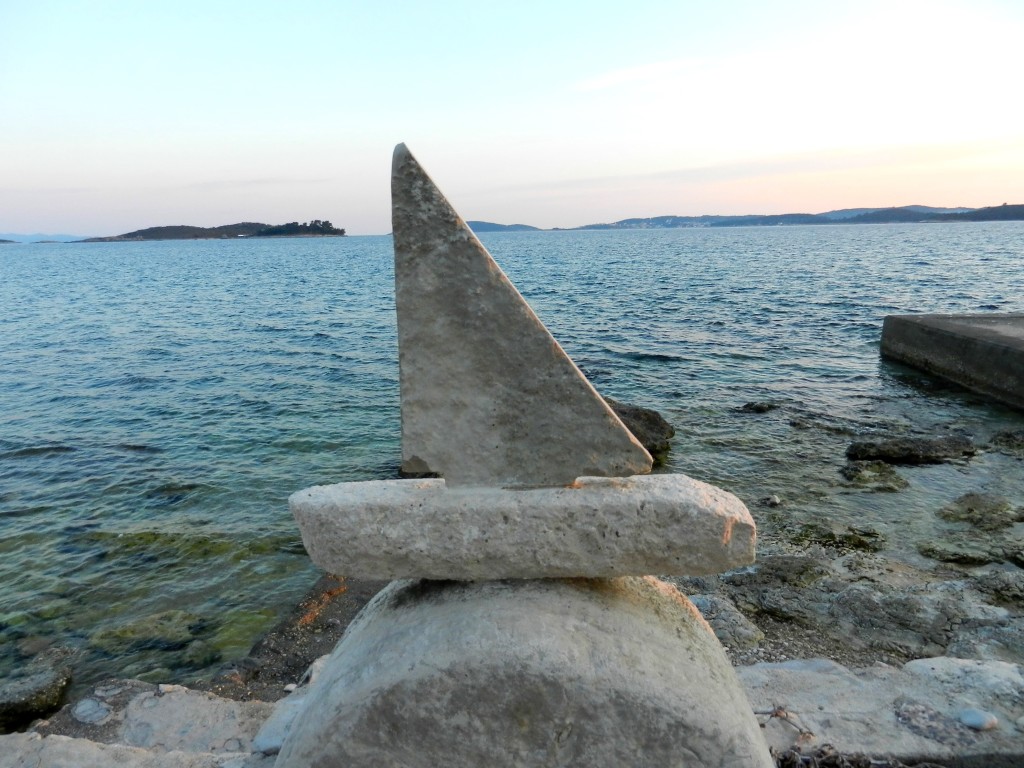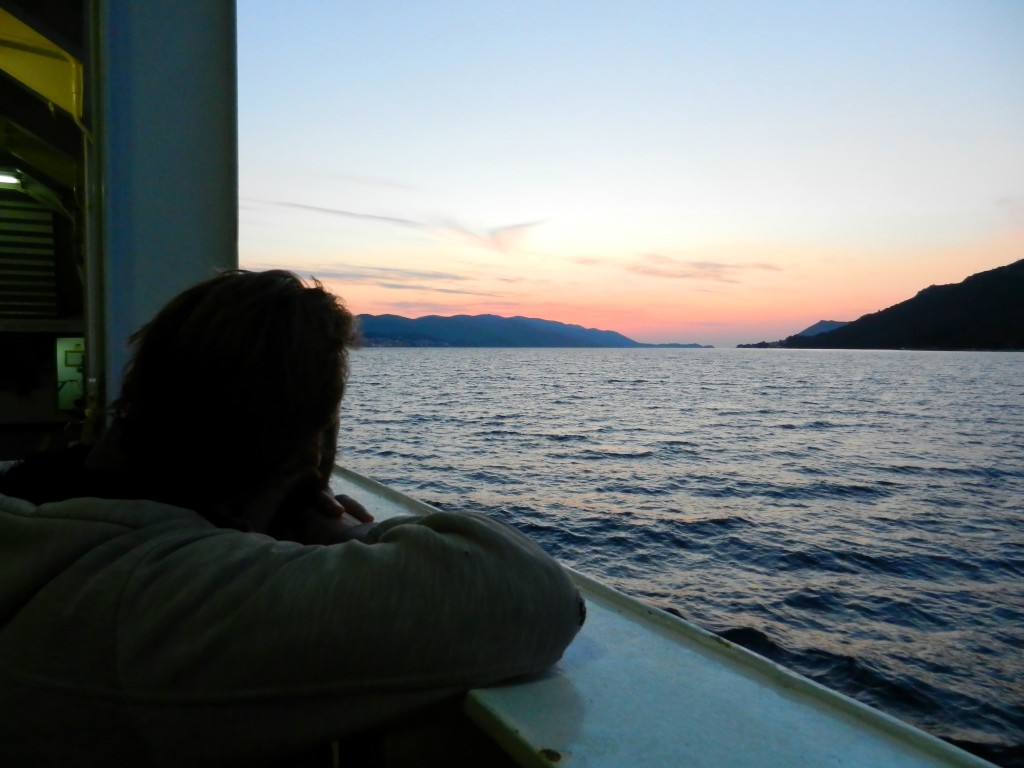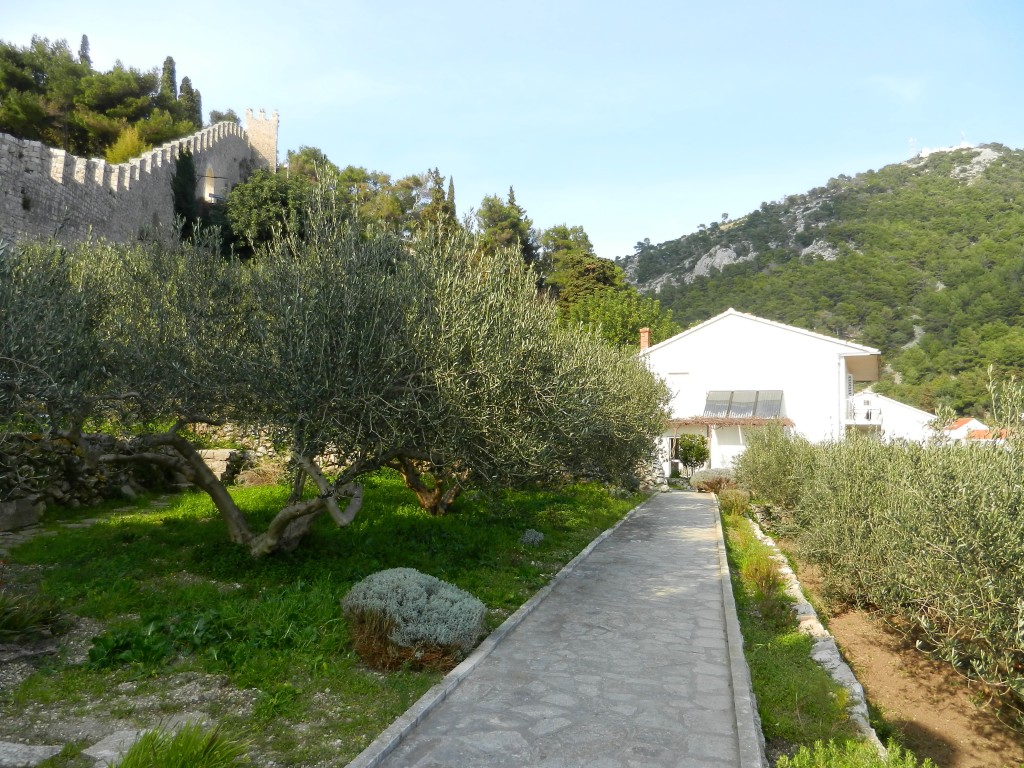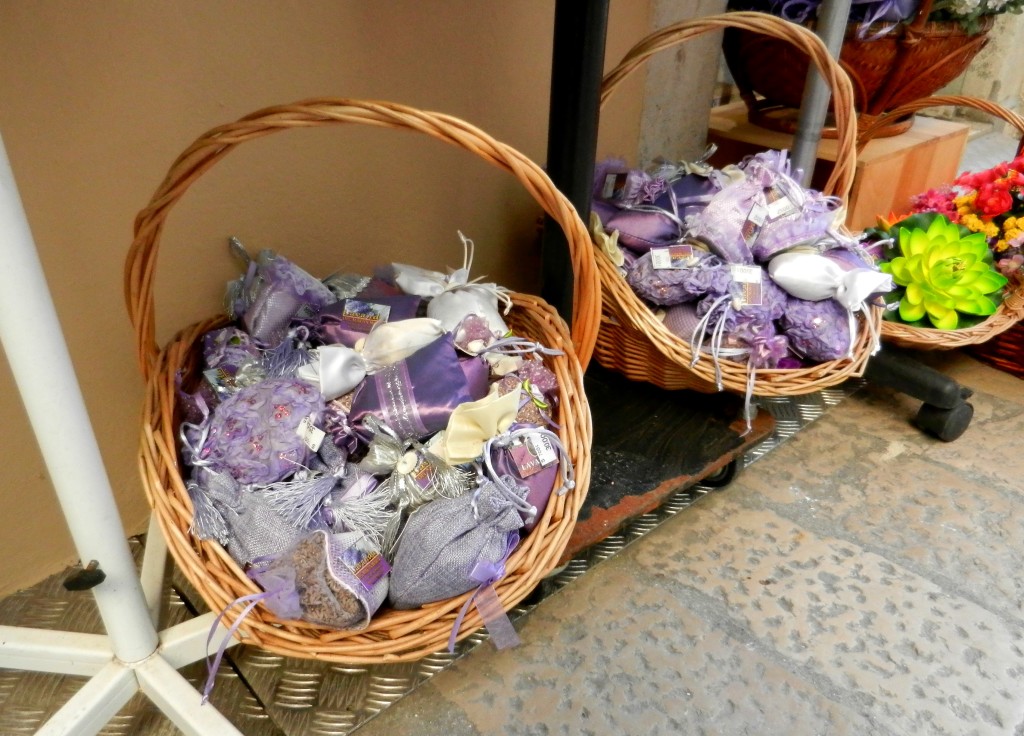Bumping and twisting around the mountainous coastline of Dalmatia, the lower region of Croatia, we took a sudden left up Pelješac peninsula. We were racing the setting sun, crossing our fingers that we would make it to Korčula island, and Korčula town, in time to snap a few photos with the last of the day’s light. The bus pulled over in Orebić, and while we impatiently waited for our ferry we got our first glimpse at Croatia’s southern Dalmatian islands. Beautiful. There is a reason why it felt like literally everyone was telling us we HAD to visit Croatia’s islands.
We finally made it over to Korčula and hotfooted over to the old town looking for our Airbnb for the night. Winding our way past a barricade of cafes we found ourselves at the foot of the grand staircase that welcomes visitors into the heart of Korčula. Passing through the gates we paused and puzzled, why was the GPS pointing us into the narrow alley along the old walls? NO WAY, our room for the night was right next to the city walls! Perfect! Dropping our bags off in the room, we decided the night was too lovely to pass up a nice, quiet walk.
It was a bit spooky at first, eerily quiet. It was early in the tourist season, so there were no drunken backpackers or parties or anything like that (though one blog said Korčula is never much of a party town). But where were all the locals? We later learned the sad truth of some of the islands is that they’ve given over so much to the tourist season that outside the summer there really aren’t many people left around. Some of the younger generation come back to work in the summer, but most go back to the larger cities for the rest of the year to attend school or find other work. For that first night we strolled through the empty streets thinking how lucky we were to have the city to ourselves.
According to legend, the island of Korčula was founded by the Trojan hero Antenor, a relative of King Priam of Troy, in the 12th century BC. Over the subsequent centuries, waves of colonization brought Illyrians, Greeks, Romans, Slavics, and many others to the area as borders shifted and empires came and went. Today, Korčula is a popular stop on the island-hopper’s route and the town has been beautifully preserved.
Korčula old town has been cleverly designed in a “fish-skeleton” layout. There’s one main, wide street running through the centre of town with narrow streets angling offside to resemble the spine and ribs of a fish skeleton! The reasoning makes it even more brilliant. The western streets are straight to welcome the refreshing summer westerlies (maestral) through the town, while the eastern streets are curved to minimize the force of the cold, winter northeasterlies (bura).
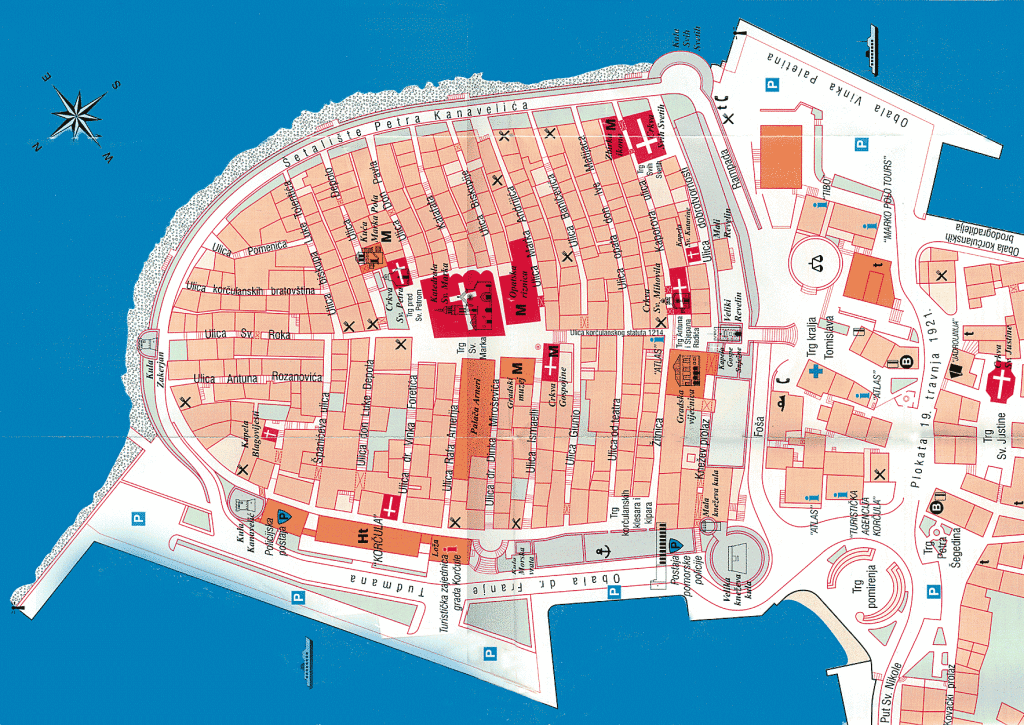
The town is small, but beautiful and quiet. We spent an easy morning wandering through the cool, marble streets searching for the house that Marco Polo (yes, THAT Marco Polo!) is believed to have been born in. The house is currently being reconstructed, but it was pretty cool to see the (supposed) home of the famous explorer!
Ferries between Croatia’s islands are really affordable, so we decided to space out our trip to Split with a stop on Hvar island. Hvar town is the island’s busiest spot, drawing around 20 000 people DAILY in the high season. Good thing we arrived when we did, eh? We also scored another amazing Airbnb location: a beautiful home nestled in an olive orchard alongside the old city walls.
Hvar proudly boasts the most sunny hours of all the islands in the Adriatic, perfect for beach-goers, sailors, and strollers. The climate is also ideal for growing the much-beloved, relaxation herb, lavender! We didn’t get to see any lavender fields (blooming is in June unfortunately) but the evidence was everywhere. Street vendors, corner markets, and souvenir stalls all peddled lavender-everything, from essential oils to dried herb packets to flavoured liquor (more on that one in a later post 😉 ). According to Hvar’s website, a combination of the island’s sun, soil, and climate produce some of the highest quality lavender in Europe. You can find Dalmatian lavender products all over Croatia, but it always makes a nice souvenir story when you’ve gotten something at its source.
Stepping out to St. Stephen’s Square we found a little more pre-season life than there was on Korčula. A few kids were having an energetic game of “keep away” in the hot mid-day sun, at least a couple-dozen people were lazily sipping coffees, and a few, like us, just seemed to be out for a nice walk. St. Stephen’s Square, named after Pope Stephen I, is one of the oldest squares in Dalmatia. The Cathedral of St. Stephen, standing at the eastern end of the square, was built back in the 16th century over the remains of a 6th century church. We couldn’t enter unfortunately, but I loved the four-tiered bell tower, the levels steadily getting more elaborate as they climb. The southern end of the square is anchored by the 16th century Arsenal facing into the harbour. It served as a repair and refitting station for ships, and was supposedly documented by the Venetians as one of the “most beautiful” and “most useful” buildings in the entire Dalmatia region. This strikes me as one of those slightly-ambiguous claims made to generate tourism (“one of the oldest in the Balkans”, “one of the biggest in south-eastern Europe”, etc.), but why not.
Wandering past the cafes, Nathanael spotted a sign pointing the way to the town fortress. We were off! The easy walking path switch-backs slowly up through a beautiful park with terrifyingly large Agave plants. We wondered if they had been planted for defensive purposes, because the spiky plants looked perfectly capable of impaling would-be invaders. Unfortunately, when we finally managed to fight our way to the top, we found the Fortica closed (it was time karma paid us back for gushing about how lucky we were to be in Croatia in the shoulder-season, wump-wump).
But all was not lost. On the way back down we had some beautiful views of the city and found a hole in the wall leading to a ruined church. It seemed like it might still be in use, but it was hard to be sure. See if you can find it when you visit Hvar! Walking back down through the park we spotted the ferry we would taking from Stari Grad to Split the following morning. Watching the solitary ferry sailing peacefully over the horizon, it was hard to imagine that in just a couple of months this place would be packed. We will have to enjoy the peace and quiet while it lasts!
